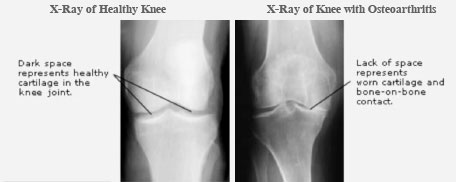Diagnosing Arthritis
A correct diagnosis is essential before starting treatment. Many patients with bone and joint pain assume they have arthritis. There are numerous causes of joint pain that are not related to arthritis. Your physician will use your history, examination, x-rays and possibly your blood work to determine if you have arthritis and, if so, what type of arthritis you have.
On an x-ray, a healthy joint appears as if there is a space between the bones in the joint. Although you cannot see the cartilage on an x-ray, in the healthy joint, the cartilage is working to cushion and smooth the movement of the joint. On the x-ray of a joint with osteoarthritis, there is bone on bone contact because the cartilage in the joint has worn away.
It is only after this that a treatment plan will be recommended. Always consult with a physician to obtain a correct diagnosis.
All patient education materials are provided by OrthoPatientEd.com and have been reviewed by our Advisory Board of leading Orthopedic Surgeons to ensure accuracy. All materials are provided for informational purposes only and are not intended to be a substitute for medical advice from your orthopedic surgeon. Any medical decisions should be made after consulting a qualified physician.
This site includes links to other websites. OrthoPatientEd.com takes no responsibility for the content or information contained in the linked sites.

